December is a particular month, full of joy and reflection on what has been accomplished during the year. The fruits and flowers stand out, with their colors and flavors making this season even more special. One of the signs that the end of the year has arrived in Guatemala is to look around and find decorations with “Flor de Pascua”, Christmas trees, and other native plants. The country is full of symbols that represent each of our traditions. Likewise, there are many typical dishes for social gatherings and special dinners where the flavors revolve around fruits such as “Manzanilla” and other edible plants such as “Maxan” leafs. In this month full of magic, join us to learn a little more about native species of Guatemala and how they represent the beautiful traditions of the Christmas season in the country.
White-tailed deer (Odocoileus virginianus)
Did you know that Guatemala has its own Rudolf? This is the white-tailed deer (Odocoileus virginianus).This species along with other relatives such as the reindeer, is widely associated with Christmas celebrations, due to their history of being the animals that pull Santa’s Claus’s sleigh. Although in real life, white-tailed deer do not pull any type of sleigh, they are major icons of Mesoamerican wildlife and can be also associated with Christmas celebrations. This species of deer is widely distributed in America, including the Mesoamerican region. With its distinctive white tail raised in alert, these deer are known to inhabit a variety of environments, from forests and meadows to suburban areas. Males, called “bucks”, typically have branched antlers that shed and regrow each year. They are herbivores, primarily feeding on grasses, leaves, and shoots. Their behavior is crepuscular, being most active during dawn and dusk. In addition to their ecological significance, the white-tailed deer also plays a prominent role in various cultures and mythologies such as the Mayan, where it symbolizes grace, life and the strong connection between humans and nature. However, like many species, it faces conservation challenges, including habitat loss and hunting. Understanding and protecting this iconic deer are essential to ensure its survival and preserve the biodiversity of the ecosystems where it is found.
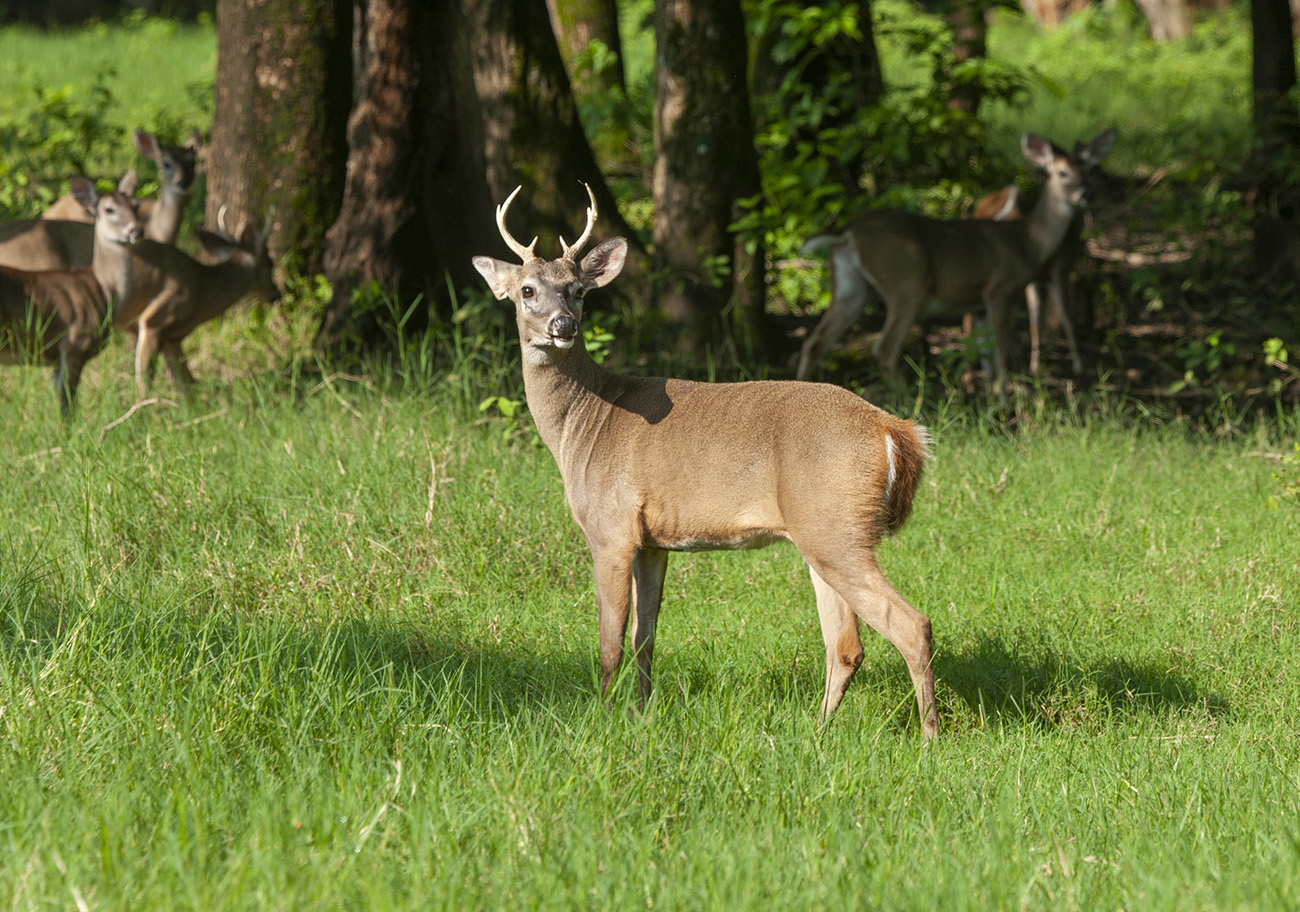
White-tailed deer (Odocoileus virginianus) buck at Autosafari Chapín. Photograph by Nicholas Helmuth, 2011.
Flor de Pascua (Euphorbia pulcherrima)
The “Flor de Pascua”, also known as “Flor de Nochebuena”, is a flowering plant indigenous to Mesoamerica. It is well known for its reed and green foliage and widely used in Christmas floral displays in the region. Despite being a species native to the region, there are more than 100 varieties of this species, which have been selected to be grown in pots and decorate interiors during the festive seasons. In Guatemala, it is cultivated for export mainly in the Sacatepéquez region, where all varieties are produced and millions of plants are exported in different sizes according to the season. This plant, which is normally found in red tones, can also produce green, white and pink flowers. Regardless of their color, these flowers symbolize success, good humor, and purity.
Did you know that what we consider a flower in this species are not really flowers? They are modified colorful leaves! Its coloration is designed to attract insects to the small yellow flowers found in its center.

Euphorbia pulcherrima, FLAAR garden, Guatemala City. Photograph by Nicholas Hellmuth, 2018.
Pine (Pinus spp.)
Currently pine is used for decoration and to create a pleasant aromatic atmosphere. In ancient times, its use was to sacralize the profane. “This tradition comes from pre-Hispanic times. Since the ground was dirty because everyone stood there, the Mayans sanctified them with pine,” explains Miguel Álvarez, a chronicler from Guatemala City.
After the arrival of the Spanish to the country, the use of coniferous trees was adopted for any celebration. “Now it is common to see pine at weddings, processions, births and all kinds of parties. Before, it was deposited as an offering on altars and tombs, according to Osberto Gobez, chronicler.
The pine has been a source of income for many families. Maité Estrada, 65 years old, has dedicated herself for more than half a century to selling this product wholesale in the Mercado Colón, zone 1 in Guatemala City. In addition to the pine that is thrown on the ground, those who deal with this conifer have also made other items such as the “worms,” which are long braids dyed with añeline and hung on the walls to decorate; and another variant of the products that emerged with this tradition are the crowns, which are placed as decoration, accompanied by “worms.”
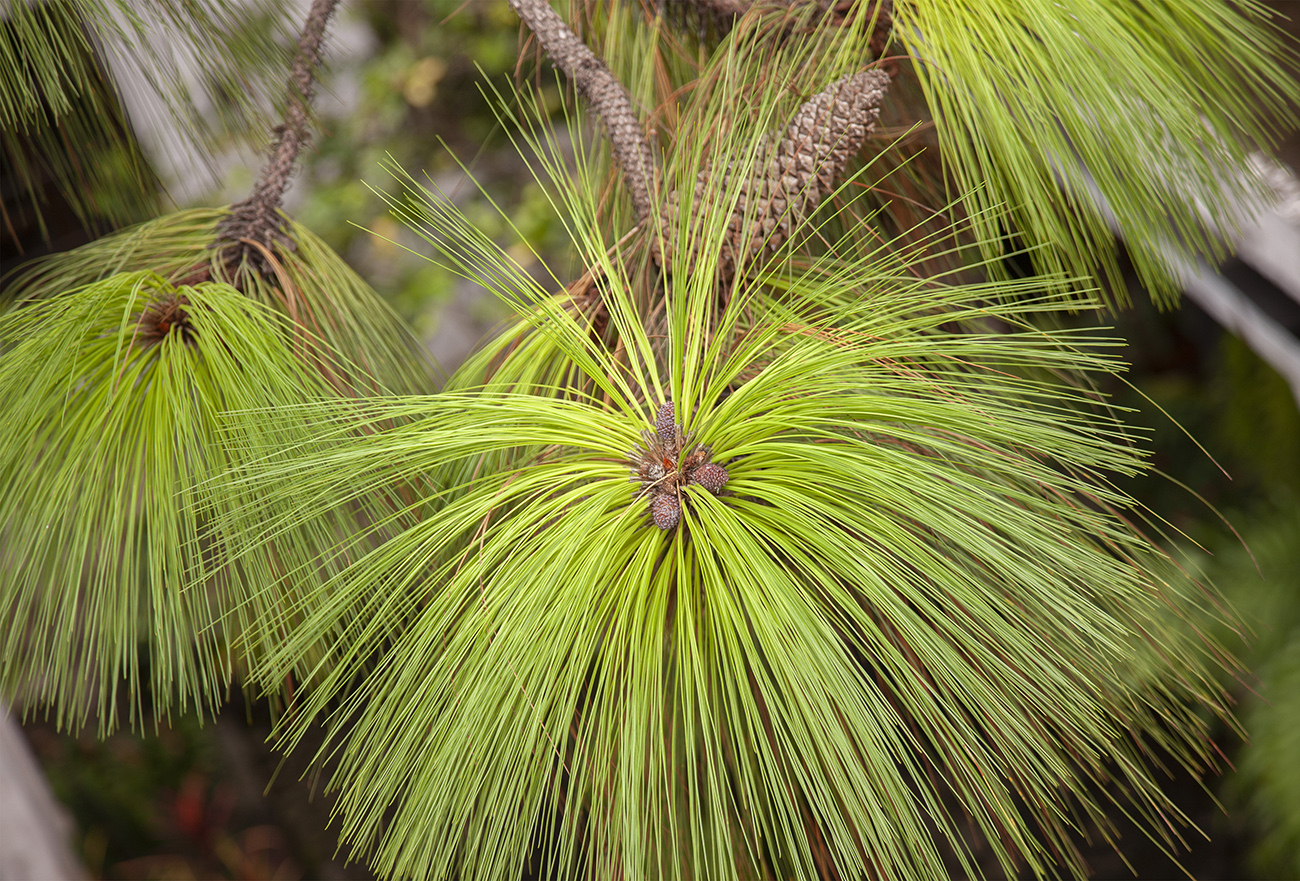
Needle-like leaves and cone of Pinus sp.( Photograph by Nicholas Hellmuth, 2010).
Pinabete (Abies guatemalensis Rehder)
The pinabete (Abies guatemalensis Rehder), also known as Tzin´ chaj (Quiché) or Pachac (Mam) is a native, endemic, protected and endangered species, regulated in the Law of Protected Areas (Decree 4-89), Law Forestry (Decree 101-96) and contained in Appendix 1 of the Convention on International Trade in Endangered Species of Wild Fauna and Flora –CITES-.
The Pinabete is a tree species, which can reach up to 50 meters in height and up to 1 meter in diameter. It is located in altitudinal ranges of 2,400 to 3,500 meters above sea level, in very humid low montane forest and very humid montane forest, with temperatures between 3 and 10º C and rainfall of 1,500–3,000 mm/year. In its natural state it is found in the departments of San Marcos, Quetzaltenango, Totonicapán, Sololá, Huehuetenango, Quiché, Jalapa and in the Sierra de las Minas. Currently there are 27,548.29 hectares of native forest.
Because it is a protected species, its use in the natural environment is prohibited; for this reason, through the aforementioned Regulation, the registration of plantations, seed-producing areas and nurseries of Pinabete Abies guatemalensis Rehder has been regulated, as well as the use of products and by-products of said species. This through the establishment of plantations, agroforestry systems with fir trees and nurseries, as an alternative for the production and marketing of fir trees and byproducts. The seal with the legend INAB/CONAP is the one that guarantees that a tree or pine tree by-products are legal.
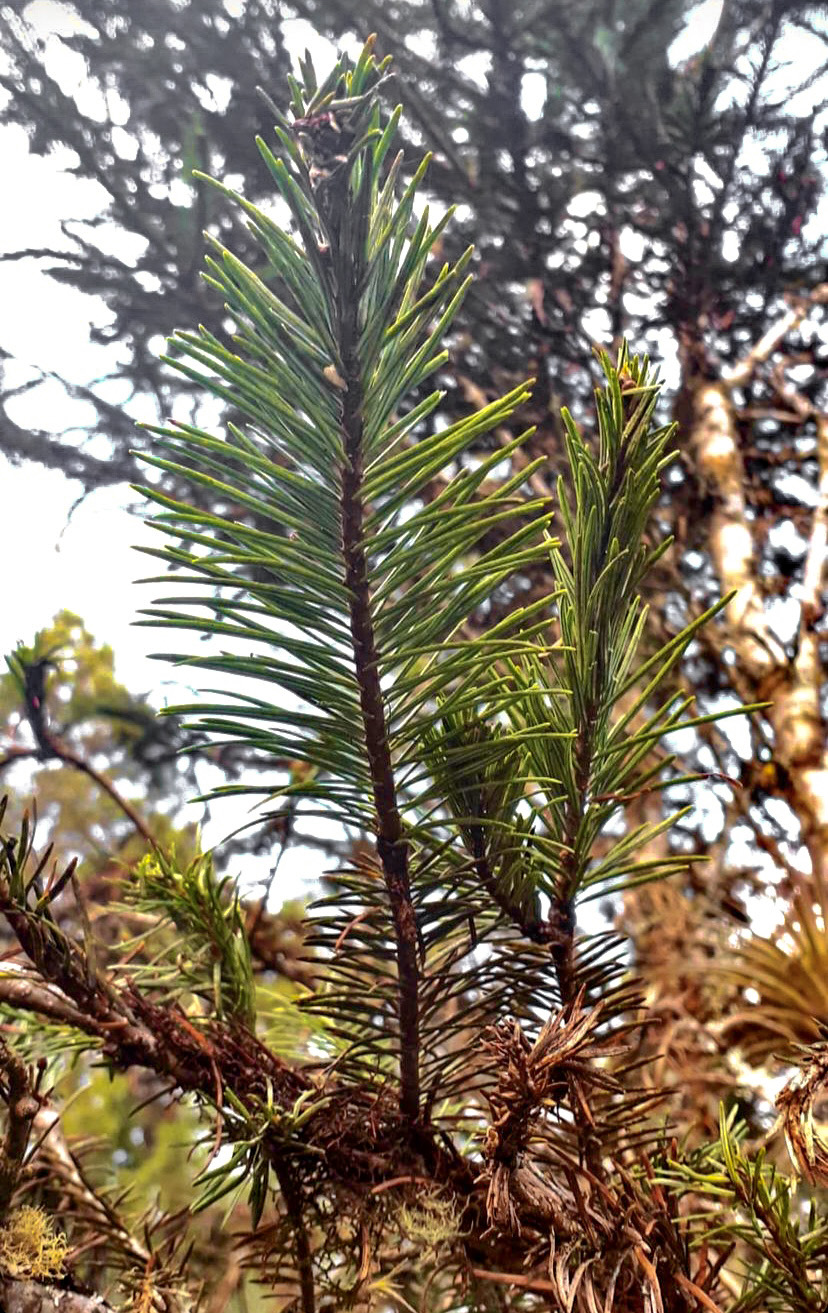
Thin branches with leaves of Abies sp. (Photograph by Victor Mendoza, 2019).
Maxán (Calathea crotalifera and C. luthea)
A characteristic dish of Mesoamerica is the tamale and during the holidays it cannot be missed, but in addition to its delicious ingredients, there is a basic element for its final preparation: the maxán, also known as “hoja de sal” and “hoja de tamal” by obvious reasons. Due to the presence of wax in the leaves of this plant, they are very useful for cooking and preserving food, as this wax limits its permeability and allows food to be cooked under controlled humidity. This characteristic makes it possible to prepare most corn preparations and the different varieties of tamales.
Several species of the Calathea genus are usually called “Maxán” and are used for the same purposes, however the most mentioned species are: C. crotalifera and C. luthea.
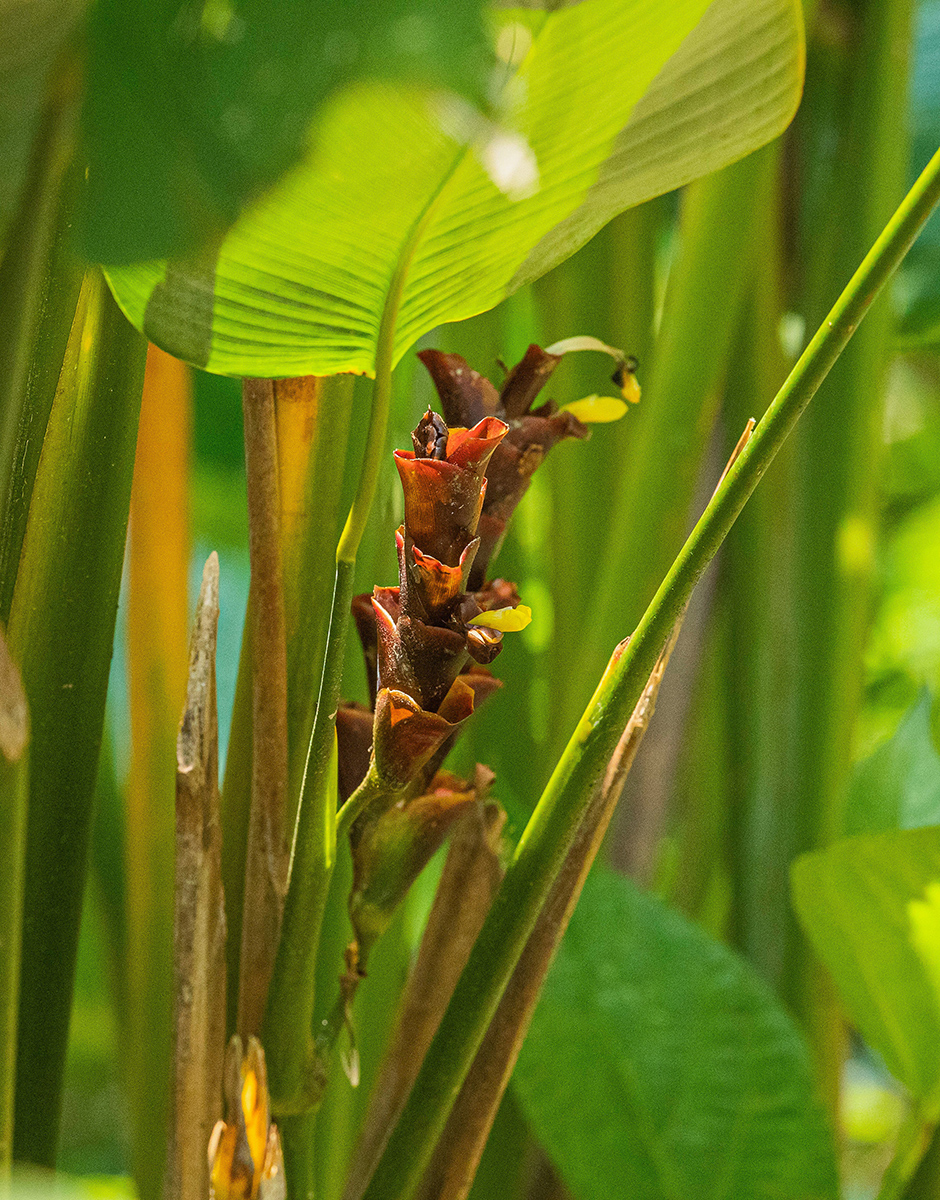
Maxan (Calathea lutea). Livingston, Izabal, 2021. Photography by David Arrivillaga.
Manzanilla (Crataegus mexicana)
Crataegus mexicana is a small fruit tree native to mountainous regions of Guatemala and Mexico, which has strong cultural ties. Its fruits resemble a small apple in shape, and their color varies from a yellowish-green to reddish-orange when ripe. They have a unique and sweet taste, and can be consumed in several ways, for example in beverages like teas or “ponche”, prepared in a jam or eaten raw.
These fruits are commonly known as “Manzanilla” in Guatemala and “tejocote” in Mexico, and they are consumed especially during the festive christmas season. In Guatemala it is often prepared sweetened in its own juices as a dessert, and it is also used as an ornament during the holiday season.
Studies have found that the fruit from the Crataegus mexicana tree was in fact consumed by communities in the region since pre-Hispanic times, and it’s suspected that some were able to domesticate this tree to harvest its fruits. These conclusions are based on several botanic fossil records found near previously inhabited sites in Mexico. This shows that this species has been part of Mexico’s and Guatemala’s cultures since hundreds of years ago.
Also, several medicinal uses have been attributed to the plant in different parts of Guatemala and Mexico, as a remedy for: the common cold, diarrhea, dysentery, as a diuretic or as cough medicine, etc. In fact, the Mexican Society of Natural History documented its use as a diuretic or a cough remedy up until the end of the XIX century.

Photography by: FLAAR Mesoamerica, Nov. 29, 2011, 3:28 pm. Camera: Canon EOS-1Ds Mark III. Settings: 1/40 sec; f/8; ISO 400.
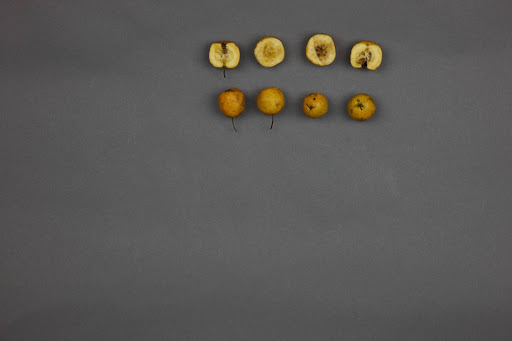
Photography by: FLAAR Mesoamerica, Nov. 29, 2011, 3:30 pm. Camera: Canon EOS-1Ds Mark III. Settings: 1/40 sec; f/8; ISO 400.
Barba de viejo (Tillandsia usneoides)
Tillandsia usneoides commonly known as “barba de viejo”, is a type of bromeliad that grows in long, gray-green strands. It is native to the southeastern United States, Mexico, Central America, and parts of South America. “Barba de viejo” is an epiphyte, meaning it attaches itself to trees and other surfaces for support but doesn’t draw nutrients from them. Instead, it absorbs moisture and nutrients from the air and rain. This plant is often found hanging from tree branches, giving a distinctive and ethereal appearance to the landscapes it inhabits. Due to its unique appearance, this plant is used to decorate homes and altars during the Christmas season in Guatemala. This practice is a longstanding tradition in some communities and among individuals. However, the excessive use and uncontrolled harvesting for the sale during these festivities, have led to a decrease in its presence in forests and other areas. In many regions, its use is no longer allowed, with the aim of preserving the species. It is always advisable to check conservation regulations in your area, to ensure that the decorative use of this species is permitted and does not cause harm to the species or the ecosystem.

“Barba de viejo” (Tillandsia usneoides) hanging from the branches of a tree near Laguna Petexbatún, Petén, Guatemala. Photograph by Maria Alejandra Gutierrez, 2019.
Gallitos (Tillandsia spp.)
Another big tradition among local people is to use gallitos (Tillandsias) to decorate house facades, Christmas trees and nativity scenes. The most common species used in the holidays is Tillandsia guatemalensis, also known by local people as pata de gallo. Its bright inflorescence, which happens to be red as most flowers and decorations used on Christmas, develop at the end of the year, and that is in part the reason why people use it as an ornament in this season. Moreover, this species is rather common in the montane forests of Guatemala, however most of its trade is done by harvesting wild plants.

“Gallito” (Tillandsia brachycaulos). Parque Nacional Tikal, Petén. Edwin Solares, 2022.
Bibliography
- 2021
- La nochebuena (Euphorbia pulcherrima), el tesoro mexica. Universidad Autónoma del Estado de Hidalgo.
- 2017
- Caracterización de cultivares de Euphorbia pulcherrima, Willd Ex Klotzch para mercado local; San Miguel Dueñas, Sacatepequez. Degree Thesis, Universidad San Carlos de Guatemala.
- 2010
- Guía de Reconocimiento del Género Tillandsia de Guatemala. Available online:www.caftadr-environment.org/wp-content/uploads/2016/04/guia-de-Reconocimiento-de-Tillandsia-2.pdf
- 2020
- Maxán (Calathea crotalifera). Available online: www.academia.edu/43361983/Max%C3%A1n_Calathea_crotalifera_
- 2014
- Los orígenes prehispánicos de una tradición alimentaria en la cuenca de México. Anales De Antropología, 48(1), 97–121.https://doi.org/10.1016/s0185-1225(14)70491-6
- 2022
- “EL PINABETE: ESPECIE ÚNICA A NIVEL MUNDIAL” Available online.https://prensa.gob.gt/comunicado/el-pinabete-especie-unica-nivel-mundial
- 2015
- Hunters and the conservation and management of white-tailed deer (Odocoileus virginianus). International Journal of Environmental Studies, 72(5), 839-849.
- 2019
- Estado de conservación del venado cola blanca, el cabrito rojo y el cabro bayo en Guatemala, en la Reserva de Biosfera Calakmul y el ejido Nuevo Becal, México. ASGUAMA. Available online:www.researchgate.net/publication/333521331_Estado_de_conservacion_del_venado_cola_blanca_el_cabrito_rojo_y_el_cabro_bayo_en_Guatemala_en_la_Reserva_de_Biosfera_Calakmul_y_el_ejido_Nuevo_Becal_Mexico
- 2014
- “El aroma a Navidad” Available online.www.prensalibre.com/uncategorized/pino-tradicion-navidad-guatemala-0-1270673046/
- 2017
- Características reproductivas de nueve variedades de nochebuena (Euphorbia pulcherrima, Willd ex Kotzch).
Written by Vivian Hurtado, Sergio Jerez, Victor Mendoza, Flor Morales Arroyo, Mariana Rivas Gálvez, and Alejandra Valenzuela.

